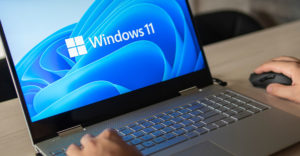
Breaking the screen on your mobile device doesn’t have to mean a brand new, expensive bit of kit. It’s actually quite easy, and cheap, to replace the glass once you get the hang of it. A tablet touchscreen can cost about US$50 if you perform the work.
I’ve replaced a few touchscreens on my roughly handled devices and found that tablet and phone construction both rely on the same basic concepts.
This is how to approach it.
First, get familiar with the makeup of your device. The construction is loosely the same across devices and generally includes a back cover, motherboard-containing frame, LCD-containing chassis, LCD, front frame or bezel, and the touch-sensitive glass sandwich — which is called a digitizer.
See update published Apr 30, 2020:How to Fix Your Phone or Tablet’s Broken Screen
Tools that you’ll need include miscellaneous small screwdrivers, a heat gun, scissors, double-sided adhesive tape, canned air, work gloves and two dinner-table bowls to keep screws from getting lost.
Replacement digitizers can be obtained from auction sites like eBay.
The Teardown
Step 1: Remove the device’s back cover and pull the main battery.
Step 2: Loosen any stuck-on cabling that is now exposed, like the camera cable, for example. Then remove cables if the clasps are exposed. These cables simply slide out of any exposed sockets after clasps are released.
Tip: The tape-style cables are often held onto the frame and parts by adhesive, so tug gently to release.
Step 3: Unscrew the Phillips or Torx screws that hold the motherboard-containing back frame to the LCD-containing chassis and place the screws in a bowl for safe-keeping.
Tip: There can be lots of screws here — my Toshiba tablet has 14.
Step 4: Separate the back frame from the chassis by gently and carefully pulling the two apart.
Tip: Perform a visual check for any hidden, unremoved screws if you detect resistance. Look for any hidden cables that connect the glass to the LCD-containing chassis and remove if necessary.
Step 5: Remove any further cable assemblies that have become exposed by the separation of parts.
Tip: Maintain visual cues as to which cable to reattach where. For example, place them on the work surface face-up in the order of removal.
Step 6: Remove the LCD-containing chassis from the front frame or bezel and glass assembly by unscrewing a second batch of screws.
Store the second set of screws in a second bowl. Remove any further parts such as the camera.
Tip: Don’t touch the LCD face.
Step 7: Separate the existing, damaged glass from the bezel or front frame by waving the heat gun over the adhesive join and pulling apart. Wear gloves here because you will further break the glass.
Tip: Be patient while the heat gun loosens the adhesive and be careful not to break the bezel or front frame while removing the glass — you will need the bezel intact.
Replacing the Screen
Step 1: Attach fresh two-sided tape to areas of the bezel that have lost their stickiness. Use the existing adhesive where possible. Don’t allow tape to overlap the visual part of the glass.
Step 2: Look for any foam padding or seals and reattach.
Step 3: Thread the digitizer cable and remount the new digitizer glass to the bezel by firmly pressing it into place. Then remove any dust from the LCD and glass with canned air.
Tip: Do not touch the inside of the glass — you won’t be able to get rid of the fingerprints after assembly.
Finally, Reassemble
Reattach any parts, like the camera. Then reassemble chassis, frame and so on, in order.
You may have to assemble and disassemble a couple of times because the two sets of screws use similar holes. It’s easy to insert the initial set of screws into the wrong holes. You’ll only know you’ve done that when the second set won’t fit because you’ve already used the hole.
Tip: Look for solid connections when attaching cables. Ensure that the clasps are open first. Usually the up position is open.
In general, firm snaps indicate a good assembly. Always reapply any existing metallic tape. Count the screws. If you have any left over, backtrack.
Want to Ask a Tech Question?
Is there a piece of tech you’d like to know how to operate properly? Is there a gadget that’s got you confounded? Please send your tech questions to me, and I’ll try to answer as many as possible in this column.
And use the Talkback feature below to add your comments!





















































